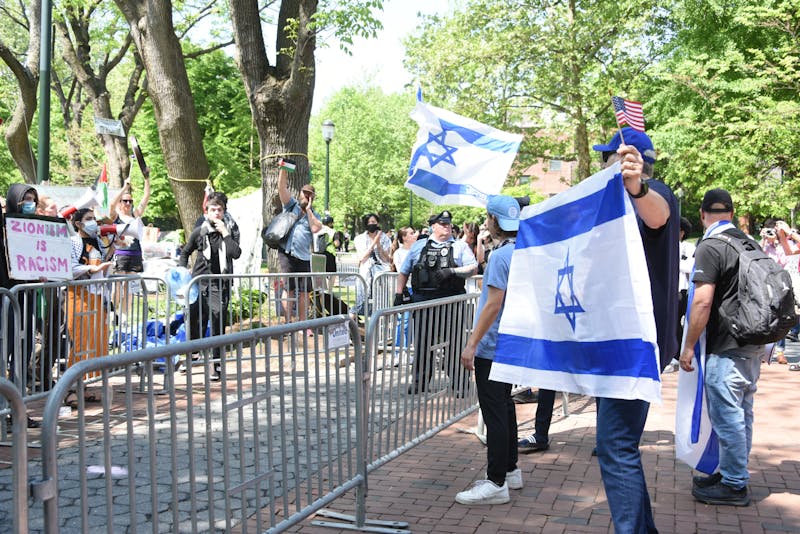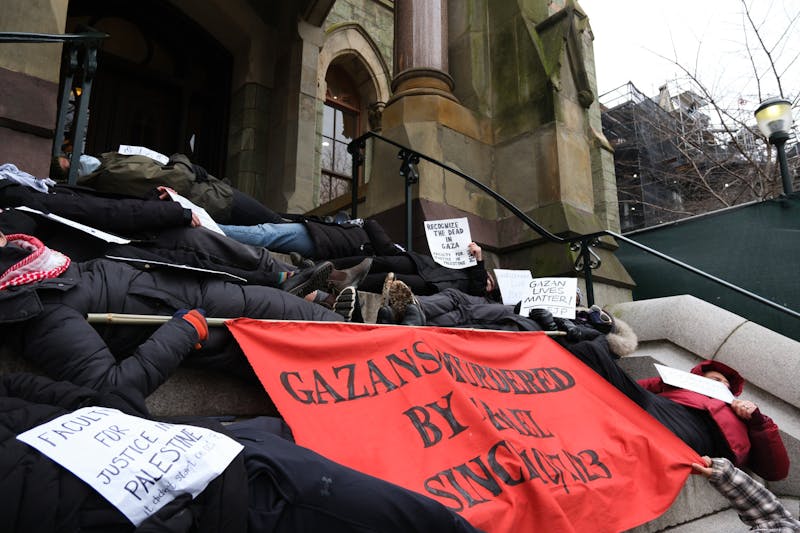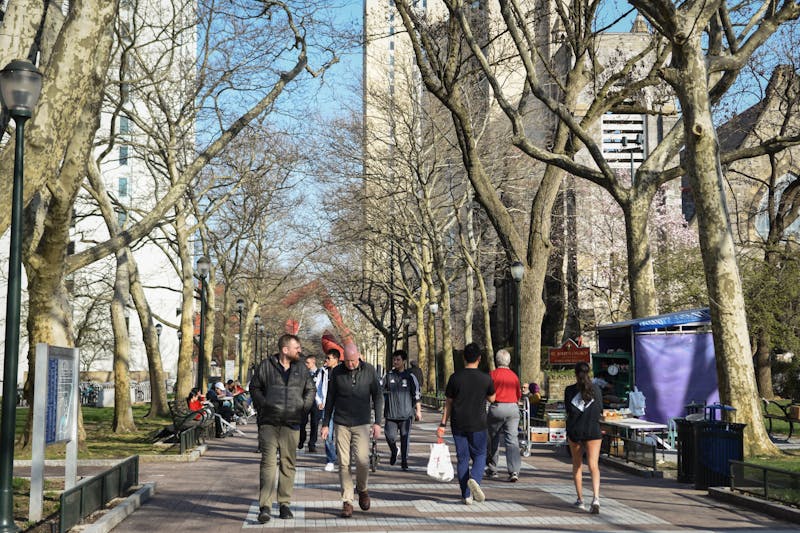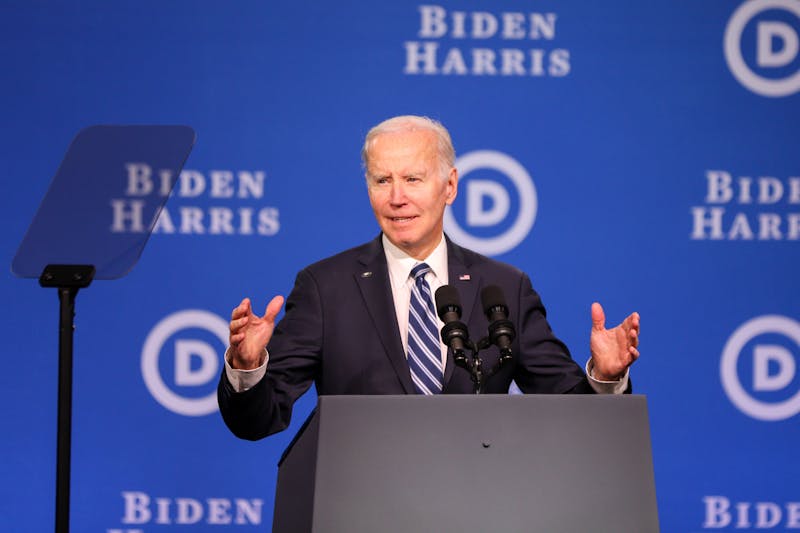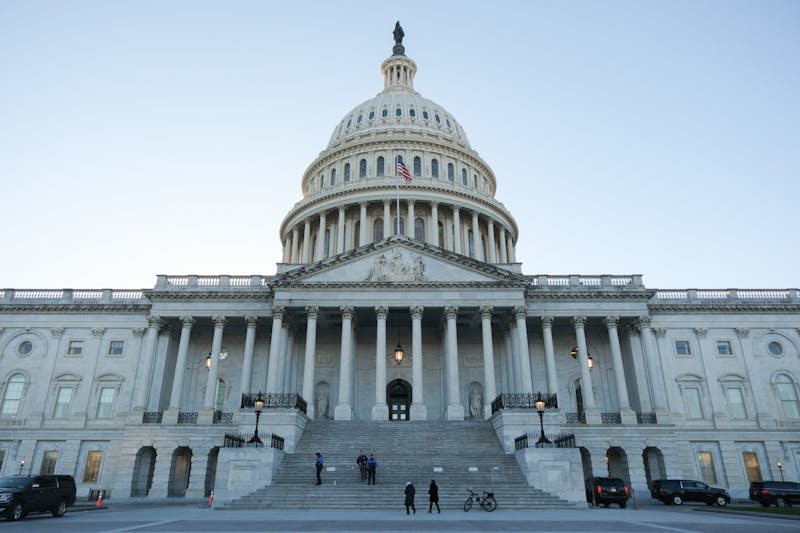
Triggered by the Hamas attacks on Oct. 7, the war in Gaza has led to divisions here in the United States — divisions that are playing out on our campus. In December, former President Liz Magill stepped down after just 15 months on the job in the wake of her congressional testimony about antisemitism on campus. Similar to dozens of other campuses and after a crackdown at Columbia University, students at Penn have begun an encampment to express solidarity with Palestinians.
These on-campus divisions have been extensively covered by national news outlets, but media outlets are not mere mirrors of on-campus events. News outlets are incentivized to focus on stories of division, conflict, and identity. Even before the events at Columbia in recent weeks, many media outlets seemed to devote disproportionate coverage to the Ivy League compared to other schools. Protest coverage can focus on an outspoken (or sometimes outrage-provoking) few, sometimes obscuring the views of the broader population in the process. Beyond the din of social media and on-campus protests, it’s critical to ask: several months into the conflict, where are the sympathies of Americans in the conflict between Israelis and Palestinians? And how do young American adults in particular view the conflict?
To answer that question, we fielded a survey between Feb. 20 and Mar. 18 with NORC, a pollster which works to survey representative samples of Americans using population-based methods. We asked all respondents: “In the Middle East conflict, do you side more with the Israelis or more with the Palestinians?”

The key result is a striking generational divide: one that is especially pronounced among respondents who identify as white or Hispanic. For example, among white Americans from ages 18 to 29, 28 percent said that their sympathies lie primarily with Palestinians versus just 9 percent who said that their sympathies lie primarily with the Israelis. Meanwhile, 20 percent said “neither” and 8 percent said “both.” For Hispanic Americans, the results are similar, with 26 percent of people under 30 saying that they sympathize primarily with the Palestinians versus 11 percent saying that they sympathize primarily with the Israelis.

Among older white and Hispanic respondents, the sympathies are reversed. For white respondents, each successive age category is more sympathetic towards the Israelis and less sympathetic towards the Palestinians, culminating in a 50 percentage-point difference among white Americans older than 60. Hispanic respondents displayed a similar trend, with the largest difference being a 33 percentage point gap in favor of Israelis among those older than 60.

The generational divide is less pronounced among Black respondents, although it is still visible. Only 3 percent of Black respondents under 30 said that their sympathies lie primarily with the Israelis, while 11 percent said that their sympathies lie primarily with the Palestinians. Almost half of young Black respondents said “neither” and another 32 percent responded “I don’t know.” Again, sympathy for Israelis steadily increases across age groups, with 15 percent of Black respondents over 60 reporting that their sympathies lie primarily with the Israelis. However, sympathy for Palestinians is virtually identical across age groups, hovering between 11 and 13 percent.
In general, these divisions appear especially significant among the more highly educated. In fact, among respondents of any age without a college degree, 62 percent choose “neither,” “both,” or “don’t know.” By contrast, only 50 percent of those with a college degree made the same choice. That is, respondents who are college educated were more likely to side with one group over the other in the conflict.
Why are college campuses at the epicenter of recent protests and counter-protests? These results provide a partial answer: we are home to young adults whose sympathies are likely to differ from those of older generations. The generational divide on this issue is deeply evident. And as institutions of higher learning, university communities are also home to a disproportionate share of people who have strong views on either side of the issue.
DANIEL HOPKINS is a professor in the political science department. His email is danhop@sas.upenn.edu.
GALL SIGLER is a research coordinator in the School of Arts and Sciences. His email is gosigler@sas.upenn.edu.
The Daily Pennsylvanian is an independent, student-run newspaper. Please consider making a donation to support the coverage that shapes the University. Your generosity ensures a future of strong journalism at Penn.
Donate




